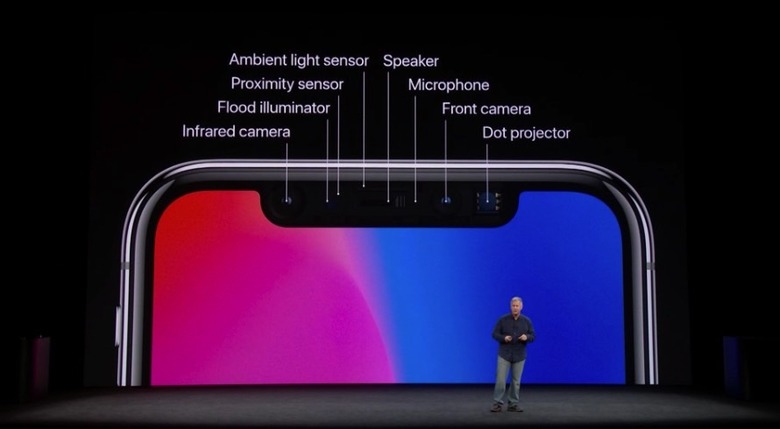iPhone 12 Leak Says One Of Apple's Best Features Is Getting Even Better
There is plenty we don't know about the next iPhone, but the puzzle pieces are beginning to come together as leaks continue to make their way online. Speaking of, MacRumors detailed a report from Barclays analysts Blayne Curtis, Thomas O'Malley, and Baylie Harris on Thursday which claims that the iPhone 12 models will feature a "refreshed" front-facing TrueDepth camera system that could lead to improved Face ID.
No further details were provided, but as this year is expected to be a significant leap forward for Apple's smartphone line, it would make sense for the device's tentpole security system to receive an upgrade too. After all, even if Touch ID does make a triumphant return, it likely won't be until 2021 at the earliest.
Beyond the Face ID refresh, the analysts also predict that the rear-facing camera system on the iPhone 12 Pro will feature 3D time-of-flight (ToF) capabilities, which has been repeatedly popping up in rumors for months. There are a variety of uses for ToF cameras, but Apple is said to be interested in utilizing the technology for enhanced augmented reality (AR) experiences. AR hasn't exactly taken the world by storm, but Apple, along with countless other technology giants, are convinced that AR is the future — or at least an element of the future.
The analysts also believe that Apple will equip the iPhone 12 Pro with 6GB of RAM — an upgrade over the 4GB of RAM on the iPhone 11 Pro — which has also been rumored for quite some time now.
Finally, the Barclays report portends that Apple will ditch the Lightning connector on at least one of its 2021 iPhone models. The analysts say that this will lead to Apple removing wired EarPods from the box altogether, which suggests that Apple may be flirting with the idea of a completely portless iPhone. It's hard to imagine an iPhone that can only be charged or connected to other devices wirelessly, but it could be less than two years away.
Based on previous rumors, Apple is expected to release a cheaper iPhone 9 (or iPhone SE 2) this spring, and then to roll out four flagship, 5G-capable iPhone 12 models in the fall.
